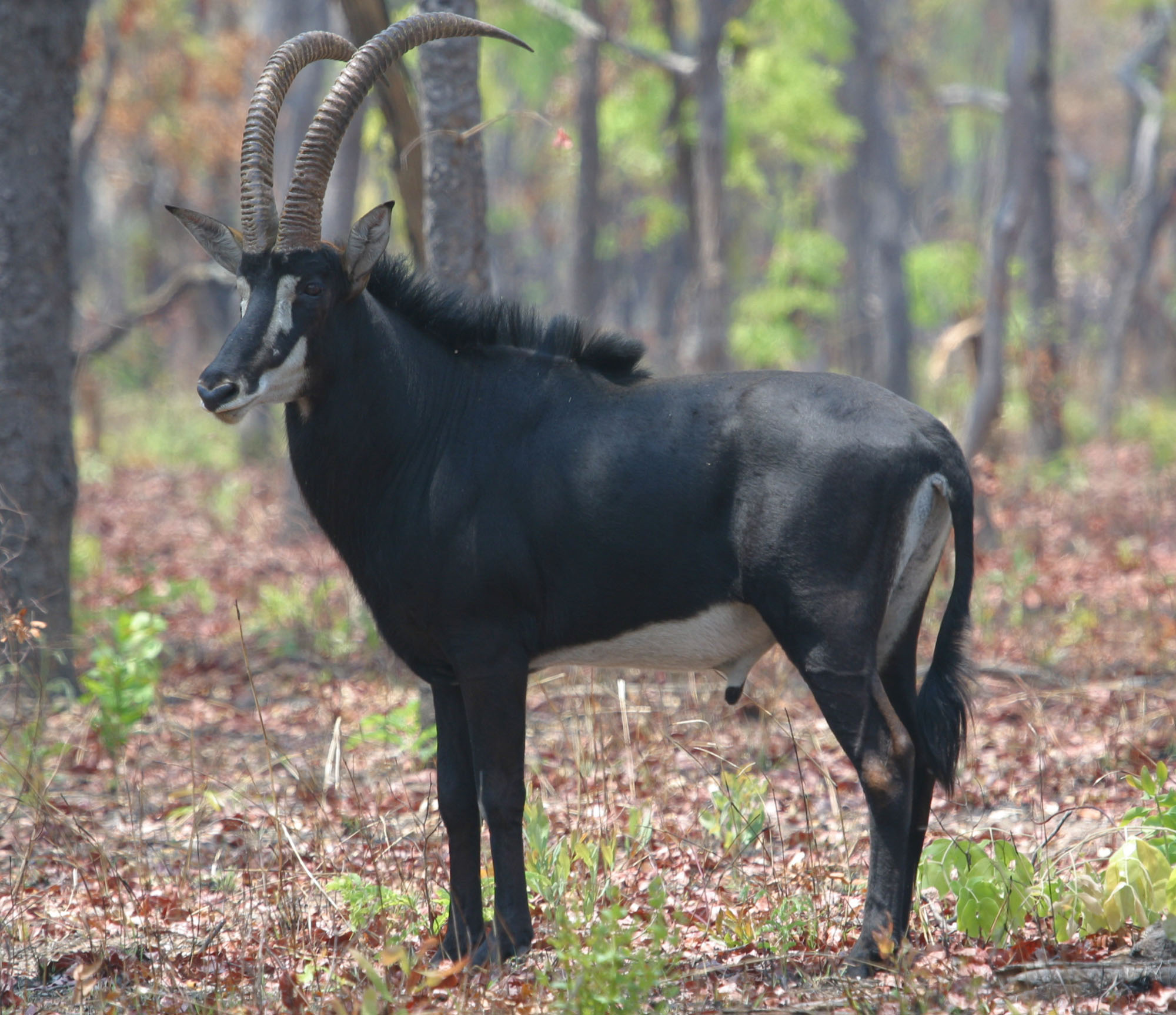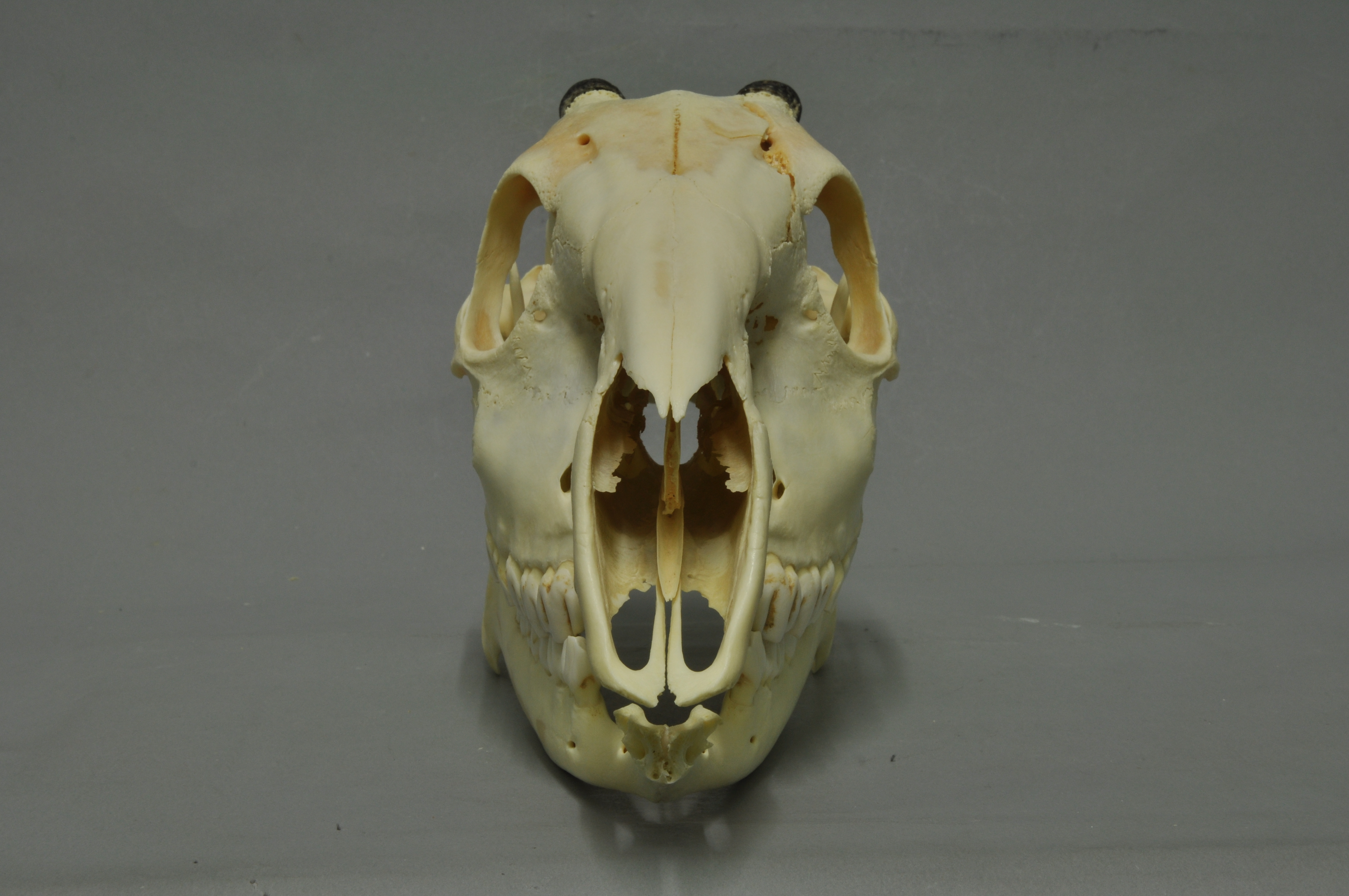|
Duiker
A duiker is a small to medium-sized brown antelope native to sub-Saharan Africa, found in heavily wooded areas. The 22 extant species, including three sometimes considered to be subspecies of the other species, form the subfamily Cephalophinae or the tribe Cephalophini. Taxonomy and phylogeny The tribe Cephalophini (formerly the subfamily Cephalophinae) comprises three genera and 22 species, three of which are sometimes considered to be subspecies of the other species. The three genera include '' Cephalophus'' (15 species and three disputed taxa), '' Philantomba'' (three species), and '' Sylvicapra'' (one species). The subfamily was first described by British zoologist John Edward Gray in 1871 in '' Proceedings of the Zoological Society of London''. The scientific name "Cephalophinae" probably comes from the combination of the New Latin word ''cephal'', meaning head, and the Greek word ''lophos'', meaning crest. The three disputed species in ''Cephalophus'' are Brooke's du ... [...More Info...] [...Related Items...] OR: [Wikipedia] [Google] [Baidu] |
Sylvicapra
The common duiker (''Sylvicapra grimmia''), also known as the gray duiker or bush duiker, is a small antelope and the only member of the genus ''Sylvicapra''. This species is found everywhere in Africa south of the Sahara, excluding the Horn of Africa and the rainforests of the central and western parts of the continent. Generally, they are found in habitats with sufficient vegetation cover to allow them to hide—savannah and hilly areas, including the fringes of human settlements. Description Colouration of this species varies widely over its vast geographic range. There are 14 subspecies described, ranging from chestnut in forested areas of Angola to grizzled gray in northern savannas and light brown shades in arid regions. It grows to about in height and generally weighs ; females are generally larger and heavier than the males. Only the male has horns and these can grow to long. Behavior Breeding is year round and the female gives birth to one fawn after a gestation pe ... [...More Info...] [...Related Items...] OR: [Wikipedia] [Google] [Baidu] |
Blue Duiker
The blue duiker (''Philantomba monticola'') is a small antelope found in central, southern and eastern Africa. It is the smallest species of duiker. The species was first described by Swedish naturalist Carl Peter Thunberg in 1789. 12 subspecies are identified. The blue duiker reaches at the shoulder and weighs . Sexually dimorphic, the females are slightly larger than the males. The dark tail measures slightly above . It has short, spiky horns, around long and hidden in hair tufts. The subspecies show a great degree of variation in their colouration. The blue duiker bears a significant resemblance to Maxwell's duiker. Activity is diurnal (limited to daytime). Secretive and cautious, the blue duiker confines itself to the forest fringes. Territorial, individuals of opposite sexes form pairs and occupy territories, nearly large and marked by preorbital gland secretions. The blue duiker feeds on fallen fruits, foliage, flowers and pieces of bark, provided mainly by the for ... [...More Info...] [...Related Items...] OR: [Wikipedia] [Google] [Baidu] |
Antelope
The term antelope refers to numerous extant or recently extinct species of the ruminant artiodactyl family Bovidae that are indigenous to most of Africa, India, the Middle East, Central Asia, and a small area of Eastern Europe. Antelopes do not form a monophyletic group, as some antelopes are more closely related to other bovid groups, such as bovines, goats, and sheep, than to other antelopes. A stricter grouping, known as the true antelopes, includes only the genera '' Gazella'', '' Nanger'', '' Eudorcas'', and '' Antilope''. One North American mammal, the pronghorn or "pronghorn antelope", is colloquially referred to as the "American antelope", despite the fact that it belongs to a completely different family ( Antilocapridae) than the true Old-World antelopes; pronghorn are the sole extant member of an extinct prehistoric lineage that once included many unique species. Although antelope are sometimes referred to, and easily misidentified as, "deer" ( cervids), true ... [...More Info...] [...Related Items...] OR: [Wikipedia] [Google] [Baidu] |
Yellow-backed Duiker
The yellow-backed duiker (''Cephalophus silvicultor'') is a shy, forest-dwelling antelope of the order Artiodactyla, from the family Bovidae. Yellow-backed duikers are the most widely-distributed of all duikers. They are found mainly in Central and Western Africa, ranging from Senegal and Gambia on the western coast, through to the Democratic Republic of the Congo to western Uganda; their distribution continues southward into Rwanda, Burundi, and most of Zambia. Taxonomy and etymology The scientific name of the yellow-backed duiker is ''Cephalophus silvicultor''. It is the type species of '' Cephalophus'', and placed in the subfamily Cephalophinae and family Bovidae. The species was first described by English botanist Adam Afzelius in the journal ''Nova Acta Regiæ Societatis Scientiarum Upsaliensis'' in 1815. The generic name has possibly originated from the combination of the New Latin word ''cephal'', meaning head, and the Greek word ''lophos'', meaning crest. The specifi ... [...More Info...] [...Related Items...] OR: [Wikipedia] [Google] [Baidu] |
Aders's Duiker
Aders's duiker (''Cephalophus adersi''), also known as ''nunga'' in Swahili, ''kunga marara'' in Kipokomo and ''harake'' in Giriama, is a small, forest-dwelling duiker found only in Zanzibar and Kenya. It may be a subspecies of the red, Harvey's, or Peters's duiker or a hybrid of a combination of these. A 2022 study proposed to move ''C. adersi'' into its own new genus, ''Leucocephalophus''. It is named after W. Mansfield Aders, a zoologist with the Zanzibar Government Service. Characteristics The Aders's duiker stands at around tall at the shoulder. Its weight varies greatly depending on geographical location; those in eastern Zanzibar weigh , while those in the south weigh only . Its coat is reddish-brown, grayer on the neck, and lighter down the backside and underneath. A small red crest runs along the head. It also has small, simple horns of . The muzzle is pointed, and the nose has a flat front. The ears measure long, with a marked cowlick or whorl of hair on the nape ... [...More Info...] [...Related Items...] OR: [Wikipedia] [Google] [Baidu] |
Zebra Duiker
The zebra duiker (''Cephalophus zebra'') is a small antelope found primarily in Liberia, as well as the Ivory Coast, Sierra Leone, and occasionally Guinea. They are sometimes referred to as the banded duiker or striped-back duiker. It is believed to be one of the earliest duiker species to have evolved. Taxonomy and etymology The scientific name of the zebra duiker is ''Cephalophus zebra''. The bay duiker is classified under the genus '' Cephalophus'' and the family Bovidae. It was first described by British zoologist John Edward Gray in 1838 in '' Annals of Natural History''. No subspecies are identified. The generic name probably comes from the combination of the New Latin word ''cephal'', meaning head, and the Greek word ''lophos'', meaning crest. The specific name ''zebra'' pertains to the striking resemblance this duiker bears to the zebra due to the presence of dorsal stripes. The word "duiker" comes from the Afrikaans word ''duik'', or Dutch ''duiker'' - both mean "di ... [...More Info...] [...Related Items...] OR: [Wikipedia] [Google] [Baidu] |
Bay Duiker
The bay duiker (''Cephalophus dorsalis''), also known as the black-striped duiker and the black-backed duiker, is a forest-dwelling duiker native to western and southern Africa. It was first described by British zoologist John Edward Gray in 1846. Two subspecies are identified. The bay duiker is reddish-brown and has a moderate size. Both sexes reach at the shoulder. The sexes do not vary considerably in their weights, either; the typical weight range for this duiker is . Both sexes have a pair of spiky horns, measuring . A notable feature of this duiker is the well-pronounced solid stripe of black extending from the back of the head to the tail. The bay duiker is a nocturnal animal. It tends to remain solitary, but pairs can also be observed. The leopard is the main predator of this duiker. It mainly prefers fruits, but may also feed on animal matter such as bird eggs. Females may conceive by the age of 18 months. Breeding occurs throughout the year. Gestation lasts about 240 ... [...More Info...] [...Related Items...] OR: [Wikipedia] [Google] [Baidu] |
Maxwell's Duiker
The Maxwell's duiker (''Philantomba maxwellii'') is a small antelope found in western Africa. Taxonomy The scientific name of Maxwell's duiker is ''Philantomba maxwelli''. It is classified in the genus '' Philantomba'' along with the blue duiker (''P. monticola'') and Walter's duiker (''P. walteri''). It was first described by English naturalist Charles Hamilton Smith in 1827. The species is sometimes treated as a species of '' Cephalophus'', another genus of duikers, although ''Philantomba'' has been recognised as a genus by zoologists such as Peter Grubb and Colin Groves. Theodor Haltenorth has considered this species to be a race of the blue duiker due to their identical features. In 2012, Anne R. Johnston (of the University of Orleans) and colleagues constructed a cladogram of the subfamily Cephalophinae (duiker), that includes the three genera '' Cephalophus'', ''Philantomba'' and '' Sylvicapra'', based on mitochondrial analysis. ''Philantomba'' was shown to be mono ... [...More Info...] [...Related Items...] OR: [Wikipedia] [Google] [Baidu] |
White-bellied Duiker
The white-bellied duiker (''Cephalophus leucogaster'') is a duiker found in central Africa. Little is known on the ecology of the species, and only some information on habitat and diet is available. Duikers are fairly small species of antelope that originate from, and still reside in, sub-Saharan Africa. The white-bellied duiker ranges in Cameroon, the Central African Republic, the Republic of the Congo, the Democratic Republic of the Congo, Equatorial Guinea, and Gabon, while it is likely to have been extirpated in Uganda.(East, 1996) References {{DEFAULTSORT:duiker, white-bellied white-bellied duiker Fauna of Central Africa white-bellied duiker Taxa named by John Edward Gray ... [...More Info...] [...Related Items...] OR: [Wikipedia] [Google] [Baidu] |
Jentink's Duiker
Jentink's duiker (''Cephalophus jentinki''), also known as ''gidi-gidi'' in Krio and ''kaikulowulei'' in Mende, is a forest-dwelling duiker found in the southern parts of Liberia, southwestern Côte d'Ivoire, and scattered enclaves in Sierra Leone. It is named in honor of Fredericus Anna Jentink. Jentink's duikers stand around tall at the shoulder and weigh about , making them the largest species of the duikers. They are gray from the shoulders back and dark black from the shoulders forward. A white band goes over the shoulders, between the two colours and joining the white undersides. Jentink's duikers have long, thin horns, which curl back a little at the ends, and reach between . Jentink's duikers live mainly in very thick rainforest, where they eat fruit, flowers, and leaves which have fallen from the canopy, as well as stems of seedlings, roots, and, to the annoyance of local farmers, palm nuts, mangos, and cocoa pods. They are nocturnal and shelter during the day in de ... [...More Info...] [...Related Items...] OR: [Wikipedia] [Google] [Baidu] |
Abbott's Duiker
Abbott's duiker (''Cephalophus spadix''), also known as ''minde'' in Swahili, is a large, forest-dwelling duiker (small antelope) found only in a few scattered enclaves in Tanzania. It may be a subspecies of the yellow-backed duiker. It is very rare, and the first photograph of an Abbott's duiker in the wild was taken as recently as 2003. Characteristics Abbott's duikers stand around tall at the shoulder and weigh about . This duiker has a glossy, dark brown coat which is lighter on the underside. The face is paler and gray in color, with a large red tuft on the forehead; the horns are thin and short (). The secretive behavior of Abbott's duiker, along with its largely nocturnal habits and preference for dense vegetation, means little is known about the ecology and behavior of this species. It has been observed feeding on leaves in the forest understory, and on vegetation in forest clearings, and may feed on fruits, flowers and moss. An Abbott's duiker has also been seen with a ... [...More Info...] [...Related Items...] OR: [Wikipedia] [Google] [Baidu] |





